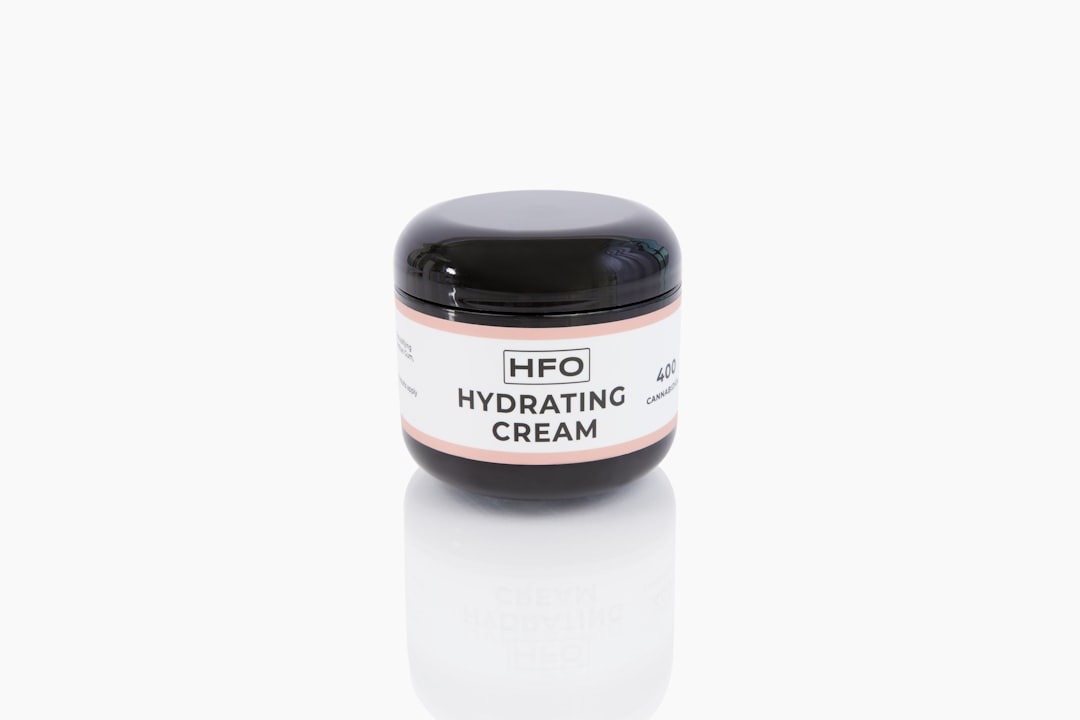Epilating can be a game-changer in your hair removal routine, offering long-lasting results that leave your skin feeling smooth and hair-free. However, the process can also lead to skin irritation, redness, and even ingrown hairs if not followed by proper aftercare. Understanding the importance of post-epilation care is crucial for maintaining healthy skin and ensuring that you enjoy the benefits of epilation without the discomfort.
After all, your skin deserves the best treatment after undergoing such a rigorous process. In this article, you will discover various aftercare products and techniques that can help soothe your skin, prevent irritation, and keep it looking radiant. From moisturizing products to exfoliating scrubs, each section will delve into the essentials of post-epilation care.
By incorporating these practices into your routine, you can enhance your epilating experience and enjoy the smooth skin you desire without the unwanted side effects.
Key Takeaways
- Proper aftercare is essential for maintaining smooth and healthy skin after epilating.
- Using moisturizing products can help keep the skin hydrated and prevent dryness and flakiness.
- Exfoliating scrubs can help remove dead skin cells and prevent ingrown hairs, leading to smoother skin.
- Soothing creams can help reduce redness and irritation caused by epilating, providing relief to the skin.
- Ingrown hair treatments can help prevent and treat ingrown hairs, keeping the skin smooth and blemish-free.
Moisturizing Products for Hydration
One of the most critical steps in your epilating aftercare routine is moisturizing. After epilation, your skin may feel dry or tight due to the removal of hair from the follicles.
Look for products that are rich in hydrating ingredients such as hyaluronic acid, glycerin, or natural oils like coconut or almond oil. These ingredients not only provide immediate hydration but also help to lock in moisture, keeping your skin supple and soft. When applying moisturizer, take your time to gently massage it into your skin.
This not only helps the product absorb better but also promotes blood circulation, which can aid in reducing redness and irritation. You might find that using a lightweight lotion during the day and a thicker cream at night works best for you. This dual approach ensures that your skin remains hydrated around the clock, allowing it to recover from the epilation process effectively.
Exfoliating Scrubs for Smooth Skin
Exfoliation is another essential component of post-epilation care that should not be overlooked. While it may seem counterintuitive to scrub your skin after hair removal, gentle exfoliation can actually help prevent ingrown hairs and keep your skin smooth. By sloughing off dead skin cells, you create a clearer pathway for hair to grow out properly, reducing the likelihood of it becoming trapped beneath the surface.
When choosing an exfoliating scrub, opt for one that is specifically designed for sensitive skin. Look for products with fine granules or natural exfoliants like sugar or oatmeal, as these are less likely to irritate freshly epilated skin. Incorporate exfoliation into your routine about two to three times a week, but be cautious not to overdo it.
Over-exfoliating can lead to further irritation and compromise your skin’s barrier, so listen to your skin’s needs and adjust accordingly. (Source: American Academy of Dermatology)
Soothing Creams for Redness and Irritation
| Product Name | Active Ingredients | Size | Price | User Rating |
|---|---|---|---|---|
| Soothing Cream A | Aloe Vera, Calendula | 50ml | 15.99 | 4.5/5 |
| Soothing Cream B | Chamomile, Vitamin E | 100ml | 20.99 | 4.8/5 |
| Soothing Cream C | Lavender, Shea Butter | 75ml | 18.50 | 4.3/5 |
After epilating, it’s common to experience some redness or irritation in the treated areas. To combat this discomfort, soothing creams can be incredibly beneficial. Look for products that contain calming ingredients such as aloe vera, chamomile, or calendula.
These natural extracts are known for their anti-inflammatory properties and can help reduce redness while providing a cooling sensation on the skin. When applying soothing creams, use a gentle touch to avoid further aggravating your skin.
This simple trick can enhance the soothing experience and provide immediate relief from any discomfort you may be feeling. Remember that patience is key; give your skin time to heal and respond to these soothing treatments.
Ingrown Hair Treatments for Prevention
Ingrown hairs can be one of the most frustrating side effects of epilation, but with the right preventive measures, you can minimize their occurrence. One effective strategy is to incorporate specialized ingrown hair treatments into your aftercare routine. These products often contain salicylic acid or glycolic acid, which help to exfoliate the skin and prevent hair from becoming trapped beneath the surface.
In addition to using targeted treatments, consider adopting a regular exfoliation routine as mentioned earlier. This will help keep your pores clear and reduce the chances of ingrown hairs developing in the first place. If you do notice an ingrown hair forming, resist the urge to pick at it; instead, apply a warm compress to the area to help draw it out gently.
With consistent care and attention, you can significantly reduce the likelihood of ingrown hairs becoming a recurring issue.
Cooling Gels for Calming the Skin
Cooling gels are another fantastic addition to your post-epilation care arsenal. These lightweight formulas are designed to provide instant relief from heat and irritation that may arise after hair removal. Look for gels that contain menthol or cucumber extract, as these ingredients are known for their cooling properties and can help soothe inflamed skin.
To use cooling gels effectively, apply them liberally to the affected areas immediately after epilation. The refreshing sensation can help alleviate discomfort while also providing hydration. You might find that keeping a tube of cooling gel in your skincare routine becomes a staple, especially during warmer months when your skin may be more prone to irritation.
By incorporating this simple step into your aftercare regimen, you can enhance your overall comfort and promote faster healing.
Antiseptic Lotions for Cleanliness
Maintaining cleanliness after epilation is crucial for preventing infections and ensuring healthy skin recovery. Antiseptic lotions can play a vital role in this aspect of aftercare. These products are formulated with antibacterial ingredients that help cleanse the skin and reduce the risk of post-epilation complications.
When selecting an antiseptic lotion, look for one that is alcohol-free to avoid further drying out your skin. Apply it gently to the treated areas using clean hands or a cotton pad immediately after epilation. This will help eliminate any bacteria that may have come into contact with your skin during the process.
Regular use of antiseptic lotions can provide peace of mind as you navigate through your post-epilation care routine.
Sunscreen for Protection
Finally, one of the most important yet often overlooked aspects of post-epilation care is sun protection. After hair removal, your skin may be more sensitive to UV rays, making it essential to apply sunscreen before heading outdoors. Choose a broad-spectrum sunscreen with an SPF of at least 30 to ensure adequate protection against both UVA and UVB rays.
When applying sunscreen, be generous and make sure to cover all exposed areas thoroughly. Reapply every two hours if you’re spending extended periods outside or if you’re sweating or swimming. By prioritizing sun protection in your aftercare routine, you not only safeguard your freshly epilated skin but also promote long-term skin health.
In conclusion, taking care of your skin after epilating is just as important as the hair removal process itself. By incorporating moisturizing products, exfoliating scrubs, soothing creams, ingrown hair treatments, cooling gels, antiseptic lotions, and sunscreen into your routine, you can ensure that your skin remains healthy and radiant. With these strategies in place, you can enjoy all the benefits of epilation while minimizing any potential discomfort or complications that may arise afterward.
Your skin will thank you!
Aftercare is crucial when it comes to maintaining smooth and healthy skin post-epilation. One article that provides valuable information on this topic is In Laser Hair Removal’s privacy policy. This article discusses the importance of using the right products and techniques to ensure optimal results after epilating. It also offers tips on how to properly care for your skin to prevent irritation and ingrown hairs. For more information on aftercare products and techniques, be sure to check out this informative article.
FAQs
What are epilating after care products?
Epilating after care products are specially formulated products designed to soothe and care for the skin after epilation, which is the process of removing hair from the root using an epilator.
What are the common types of epilating after care products?
Common types of epilating after care products include soothing lotions, moisturizers, exfoliating scrubs, and ingrown hair treatments.
Why are epilating after care products important?
Epilating after care products help to soothe the skin, reduce redness and irritation, prevent ingrown hairs, and keep the skin smooth and moisturized after the hair removal process.
How do I choose the right epilating after care products?
When choosing epilating after care products, look for gentle, non-irritating formulas that are specifically designed for post-epilation use. Consider your skin type and any specific concerns, such as ingrown hairs or sensitivity.
When should I apply epilating after care products?
It is recommended to apply epilating after care products immediately after epilation and then regularly in the days following to maintain skin health and prevent ingrown hairs.
Are there any ingredients to avoid in epilating after care products?
Avoid products with harsh chemicals, fragrances, or alcohol, as these can further irritate the skin after epilation. Look for products with soothing ingredients like aloe vera, chamomile, and tea tree oil.








